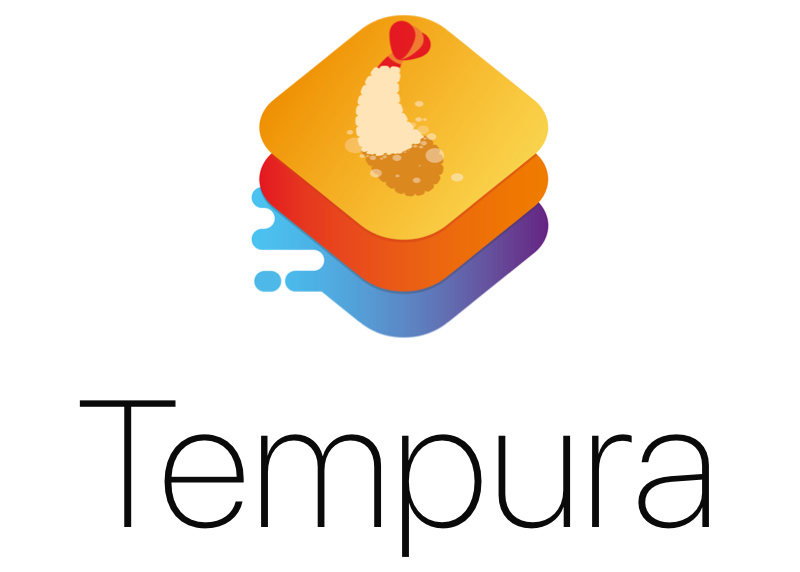Tempura is a holistic approach to iOS development, it borrows concepts from Redux (through Katana) and MVVM.
- Model your app state
- Define the actions that can change it
- Create the UI
- Enjoy automatic sync between state and UI
- Ship, iterate
We started using Tempura in a small team inside Bending Spoons. It worked so well for us, that we ended up developing and maintaining more than twenty high quality apps, with more than 10 million active users in the last year using this approach. Crash rates and development time went down, user engagement and quality went up. We are so satisfied that we wanted to share this with the iOS community, hoping that you will be as excited as we are. ❤️
Tempura uses Katana to handle the logic of your app. Your app state is defined in a single struct.
struct AppState: State {
var items: [Todo] = [
Todo(text: "Pet my unicorn"),
Todo(text: "Become a doctor.\nChange last name to Acula"),
Todo(text: "Hire two private investigators.\nGet them to follow each other"),
Todo(text: "Visit mars")
]
}You can only manipulate state through actions.
struct CompleteItem: AppAction {
var index: Int
func updatedState(currentState: inout AppState) {
currentState.items[index].completed = true
}
}The part of the state needed to render the UI of a screen is selected by a ViewModelWithState.
struct ListViewModel: ViewModelWithState {
var todos: [Todo]
init(state: AppState) {
self.todos = state.todos
}
}The UI of each screen of your app is composed in a ViewControllerModellableView. It exposes callbacks (we call them interactions) to signal that a user action occurred. It renders itself based on the ViewModelWithState.
class ListView: UIView, ViewControllerModellableView {
// subviews
var todoButton: UIButton = UIButton(type: .custom)
var todoButton: UIButton = UIButton(type: .custom)
var list: CollectionView<TodoCell, SimpleSource<TodoCellViewModel>>
// interactions
var didTapAddItem: ((String) -> ())?
var didCompleteItem: ((String) -> ())?
// update based on ViewModel
func update(oldModel: ListViewModel?) {
guard let model = self.model else { return }
let todos = model.todos
self.list.source = SimpleSource<TodoCellViewModel>(todos)
}
}Each screen of your app is managed by a ViewController. Out of the box it will automatically listen for state updates and keep the UI in sync. The only other responsibility of a ViewController is to listen for interactions from the UI and dispatch actions to change the state.
class ListViewController: ViewController<ListView> {
// listen for interactions from the view
override func setupInteraction() {
self.rootView.didCompleteItem = { [unowned self] index in
self.dispatch(CompleteItem(index: index))
}
}
}Real apps are made by more than one screen. If a screen needs to present another screen, its ViewController must conform to the RoutableWithConfiguration protocol.
extension ListViewController: RoutableWithConfiguration {
var routeIdentifier: RouteElementIdentifier { return "list screen"}
var navigationConfiguration: [NavigationRequest: NavigationInstruction] {
return [
.show("add item screen"): .presentModally({ [unowned self] _ in
let aivc = AddItemViewController(store: self.store)
return aivc
})
]
}
}You can then trigger the presentation using one of the navigation actions from the ViewController.
self.dispatch(Show("add item screen"))Learn more about the navigation here
This repository contains a demo of a todo list application done with Tempura. After a pod install, open the project and run the Demo target.
Tempura is available through CocoaPods.
- iOS 9+
- Xcode 9.0+
- Swift 4.0+
CocoaPods is a dependency manager for Cocoa projects. You can install it with the following command:
$ sudo gem install cocoapodsTo integrate Tempura in your Xcode project using CocoaPods you need to create a Podfile with this content:
use_frameworks!
source 'https://github.com/CocoaPods/Specs.git'
platform :ios, '9.0'
target 'MyApp' do
pod 'Tempura'
endNow you just need to run:
$ pod installIf you have any questions or feedback we'd love to hear from you at opensource@bendingspoons.com
- If you've found a bug, open an issue;
- If you have a feature request, open an issue;
- If you want to contribute, submit a pull request;
- If you have an idea on how to improve the framework or how to spread the word, please get in touch;
- If you want to try the framework for your project or to write a demo, please send us the link of the repo.
Tempura is available under the MIT license.
Tempura is maintained by Bending Spoons. We create our own tech products, used and loved by millions all around the world. Sounds cool? Check us out



